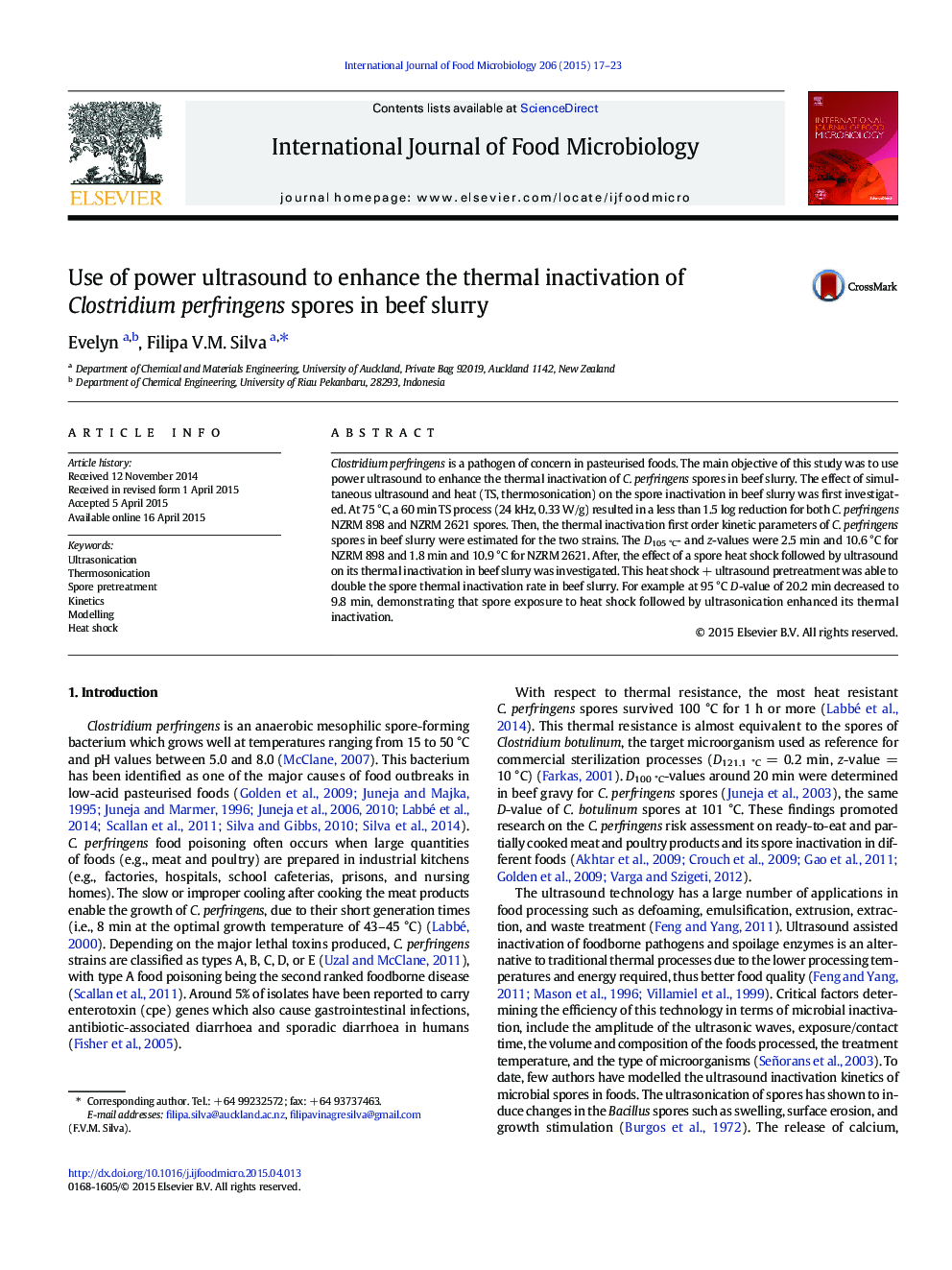| Article ID | Journal | Published Year | Pages | File Type |
|---|---|---|---|---|
| 6289906 | International Journal of Food Microbiology | 2015 | 7 Pages |
â¢Thermosonication at 75 °C was ineffective to inactivate C. perfringens spores in beef slurry.â¢Heat shocked and untreated C. perfringens spores have similar thermal resistance in beef slurry.â¢Heat shock followed by ultrasonication doubled C. perfringens spores thermal inactivation in beef slurry.â¢The thermal inactivation followed first order kinetics.
Clostridium perfringens is a pathogen of concern in pasteurised foods. The main objective of this study was to use power ultrasound to enhance the thermal inactivation of C. perfringens spores in beef slurry. The effect of simultaneous ultrasound and heat (TS, thermosonication) on the spore inactivation in beef slurry was first investigated. At 75 °C, a 60 min TS process (24 kHz, 0.33 W/g) resulted in a less than 1.5 log reduction for both C. perfringens NZRM 898 and NZRM 2621 spores. Then, the thermal inactivation first order kinetic parameters of C. perfringens spores in beef slurry were estimated for the two strains. The D105 °C- and z-values were 2.5 min and 10.6 °C for NZRM 898 and 1.8 min and 10.9 °C for NZRM 2621. After, the effect of a spore heat shock followed by ultrasound on its thermal inactivation in beef slurry was investigated. This heat shock + ultrasound pretreatment was able to double the spore thermal inactivation rate in beef slurry. For example at 95 °C D-value of 20.2 min decreased to 9.8 min, demonstrating that spore exposure to heat shock followed by ultrasonication enhanced its thermal inactivation.
